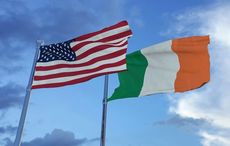Nearly 19,000 pages of newly declassified CIA documents from the Cold War and John F. Kennedy’s administration were released to the public and posted on the CIA’s website last week.
The documents, known as the President’s Daily Brief, were dossiers of CIA intelligence from around the world delivered daily by the spy agency to the White House. For the first time, some of these briefs are being made public, starting with those written in the 1960s for Kennedy and Lyndon B. Johnson, the Star-Telegram reports.
While the treasure trove of documents offer no new clues for the conspiracy theorist looking for signs of CIA plots, historians say memos from JFK’s presidency reveal the real-time intelligence that shaped pivotal decisions made in the Oval Office.
“These are an incomparable window into how a president thinks,” said William Inboden, who worked under President George W. Bush and now leads the Clements Center for National Security at the University of Texas at Austin. “When we’re reading these, it’s a mirror image of what the president’s concerns were.”
they declassified the PDB from the JFK/LBJ era and this was the one after JFK's assassination and it's cool I cried pic.twitter.com/jHZy6HmGfI
— rebecca dupree (@rdupe_) September 16, 2015
In 1962, with the U.S. and Russia nearing the brink of nuclear war, President Kennedy received top-secret intelligence that a new warhead launcher was spotted in Cuba. The memo ends with a note from a U.S. agent in Moscow describing “packed houses and enthusiastic applause” during a run of Russian performances by the New York City Ballet.
On November 22, 1963, the day he was killed, Kennedy awoke in Fort Worth to an intelligence memo that concluded that a Soviet anti-missile weapon paraded in Moscow appeared to be designed for use only in the atmosphere. It goes on to say that an election in Japan didn’t change the balance of power. One page of the briefing remains classified.
Later that day, after Kennedy had been assassinated, the CIA published a second brief that contained not intelligence but a poem the president was fond of reciting.
“Bullfight critics ranked in rows/Crowd the enormous plaza full/But only one is there who knows/And he’s the man who fights the bull.”
#HAPPENINGNOW: #CIA releases declassified docs from JFK/LBJ White House. What's in them? Find out at 5! pic.twitter.com/A0GPCYhKwn
— Elizabeth Saab (@SaabOnFox7) September 16, 2015
Declassified CIA memo: Lee Harvey Oswald visited embassies in Cuba, Russia to plot escape before assassinating JFK http://t.co/cH9IS9jw4O
— Nashville Tea Party (@NashvilleTea) September 19, 2015
Mark Updegrove, director of the LBJ Presidential Library in Austin said that for Johnson, the CIA briefs would have been an unfamiliar sight until he took over as president. In the days following Kennedy’s death, the briefs say very little about about the assassination, except for how it “acted as a catalyst” in ending a political stalemate in Italy.
Johnson’s reports would eventually become heavy with intelligence from Vietnam, and by the fall of 1967, a new section was added, entitled “Special Daily Report on North Vietnam.”
Inboden said the briefs appear to show Johnson becoming so worried about eroding public support that he sought updates on what Hanoi thought of war protesters in the U.S.




Comments